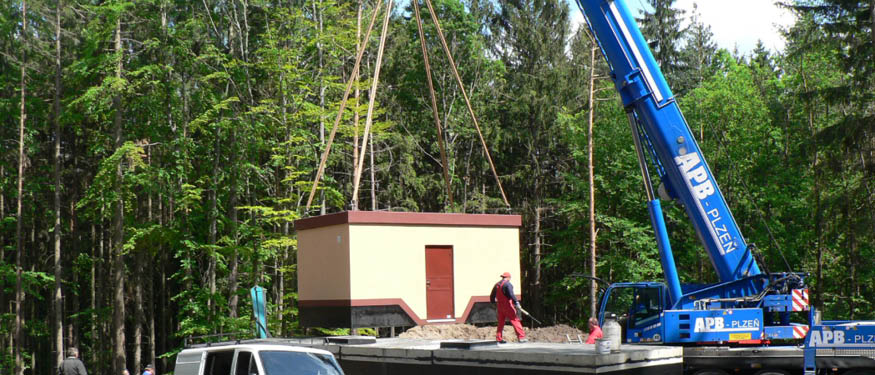The Supreme Administrative Court is gradually granting more rights to environmental organisations (EOs) in nature conservation procedures. Following a December 2020 ruling of the Supreme Administrative Court regarding the party status of EOs (for further details please see "New ruling expands environmental organisations' rights in nature conservation procedures"), the Supreme Administrative Court remains on course with its pro-EO case law. In recent months, the court has issued several more interesting rulings that seem to strengthen EOs' position in nature conservation proceedings.
Retroactive appeals against permits
Due to both EU law and European Court of Justice (ECJ) case law, in recent years, EOs have gradually been granted rights to participate and to appeal in proceedings under nature conservation law. Following the ECJ's prominent decision in Protect, these rights derive from the Aarhus Convention and the Charter of Fundamental Rights, in combination with certain environment-related EU directives, such as the EU Habitats Directive and the EU Water Framework Directive. To conform with EU law, the Austrian legislature (at both the federal and provincial level) has been implementing said rights into Austria's (EU-related) environmental law since 2018, including the Lower Austrian Nature Conservation Act (LANCA).
One of the main practical (not just academic) issues was ensuring legal certainty for permits granted long before the ECJ extended the participation rights of EOs beyond environmental impact assessments into other areas of environmental law. For example, are EOs entitled to subsequently appeal nature conservation permits from 2010?
To limit possible adverse effects (especially for project applicants), the Lower Austrian legislature stipulated two transitional provisions:
- an EO's right to appeal is admissible only for permits issued within one year prior to the amendment's entry into force on 22 March 2019 (Section 38(10) of the LANCA); and
- EOs that were already involved in the permitting procedures that were not legally concluded before the amendment came into force will continue to be involved (Section 38(11) of the LANCA).
In its decisions from December 2020 to March 2021, the Supreme Administrative Court ruled on the ratio between those two transitional provisions. What all three cases from this period have in common is that the EO (the same one in all cases) filed a complaint against a decision that was issued more than one year before the amendment to the LANCA came into force. According to the first-instance administrative court, the EO therefore did not fulfil the prerequisites of the two transitional provisions for filing a complaint.
However, the Supreme Administrative Court decided that in those cases, the second transitional provision (Section 38(11) of the LANCA) applied. EOs that were already involved in the permitting procedures that were not legally concluded before the amendment came into force will continue to be involved. They can challenge the decision regardless of when it was issued as long as:
- the decision is not yet legally binding; and
- the EO was involved in the proceedings by 22 March 2019 at the latest.
According to the Supreme Administrative Court, these two conditions were met in all three cases:
- Under Austrian law, a decision is not yet legally binding as long as it has not been issued to all parties and they can therefore still appeal. As follows from the ECJ's ruling in Protect and the subsequent decisions of the Supreme Administrative Court, EOs must be granted party status in proceedings that fall within the scope of Article 9(2) or 9(3) of the Aarhus Convention and concern EU environmental law (eg, the EU Habitats Directive). Thus, the EO must be involved in the three cases at issue. The challenged decisions were not yet legally concluded.
- The Supreme Administrative Court also had to ascertain whether the EOs had been involved before the amendment entered into force. Although the challenged decisions were served on the EOs years after they had been issued to the project applicant, the court found that the subsequent service qualified as 'involved' within the meaning of Section 38(11) of the LANCA. It was irrelevant whether the EO had been involved before the decision was issued or at a certain stage of the proceedings. According to the court, this resulted (apparently retroactively) in the EOs being involved and supposedly participating in the procedure after all.
Therefore, it was possible for the EOs to appeal the decisions. Moreover, they filed the appeals in time so that the permits did not become formally legally binding. The project and the issues raised in the complaint will now have to be reassessed, possibly resulting in a modification, new obligations or even a refusal of the project.
Special requirements for servicing permits on EOs
In Austria, a nature conservation permit (or any legal act for that matter) requires notification of the parties in order to be effective. Various consequences are linked to the notification. For example, the time limit for filing an appeal begins at the time of service. This is important, because the appeal period is usually limited. In principle, if no appeal is lodged within this period, the decision is considered final and can no longer be contested.
Judgments and permits are generally served in person by the postal service. In exceptional cases, Section 25 of the Service of Documents Act allows service by public announcement. This is permissible, for example, in cases where the documents are served on many people not personally known to the authority. Service is considered to have been effected two weeks after the posting of the announcement on the authority's official notice board.
This method was used in a nature conservation procedure regarding wind power plants in Carinthia. The authority served its permit – in addition to serving it on all parties – by public announcement on the official bulletin board and published it on its homepage.
One year later an EO filed a complaint against this permit. However, the six-week period to file a complaint had expired. Therefore, the first-instance administrative court dismissed the complaint, regardless of whether the EO had, in principle, been entitled to file a complaint under the Aarhus Convention.
However, the Supreme Administrative Court stated that notification by public announcement under Section 25 of the Service of Documents Act should be ultima ratio, to which a strict standard should be applied. The court ruled that before serving by public announcement, the authority should have first investigated who could have been considered parties to the permitting procedure. The authority should therefore have inspected the list of EOs recognised in Carinthia and served them personally. For this reason, service by public announcement was not legally effective and the permit had not been served on the EO. As such, the deadline for filing a complaint could not have expired and the EO had filed the appeal on time.
Further, it was irrelevant to the Supreme Administrative Court whether the EO had already been aware of the decision (eg, via the authority's homepage). The fact that the EO had nonetheless waited for months before filing an action was therefore not an abuse of rights.
Comment
The Supreme Administrative Court's decisions run contrary to the Lower Austrian legislature's aim of ensuring legal certainty, especially for project applicants. Due to the court's staggering reasoning, EOs will be able to fight permits issued years ago, even if the projects have already been implemented. Project applicants can no longer rely on the legal validity of their permits nor, consequently, their projects. The legal precedent now set in Lower Austria may also appear in the other federal provinces as similar transitional provisions have been enacted elsewhere.
With the aim of restoring legal certainty, the Lower Austrian legislature deleted the provision in Section 38(11) of the LANCA with effect from 30 April 2021. However, this may only increase legal uncertainty. It is unclear whether Section 38(10) of the LANCA will be applicable to EOs at all. Although the provision refers to the time when the permit was granted, the permits in question had not been granted (or served) specifically to EOs. As a result, EOs could be considered as bypassed parties and could therefore potentially challenge all decisions since the entry into force of the Charter of Fundamental Rights of the European Union in 2009. Therefore, it is questionable whether the Supreme Administrative Court will consider the provision to conform with EU law.
In the case of delivery, the authorities were also faced with a major administrative burden. They not only had to consult the list of recognised EOs according to the court, but likely also had to send their permits to all listed EOs. This is because it is impossible to foresee from the outset which EO will ultimately want to appeal a permit or will be entitled to appeal in relation to the respective procedure. In contrast, EOs were disproportionately favoured by the decision. It is not uncommon for EOs to be highly knowledgeable about projects in their area of activity. Nonetheless, not being responsible for informing themselves of new projects or permits, and instead waiting for these to be sent to them, can give them an immense advantage in preparing a complaint and collecting evidence.
However, the Carinthian legislature wanted to remedy the situation by providing permits on an electronic platform, which was created specifically for the participation of EOs. The permits are deemed to be delivered to EOs within two weeks. So far, the Supreme Administrative Court has not dealt with the question of whether this method is legitimate.
By Christian Holzer, Associate, and Sarah Wolf, Associate, Schoenherr






















